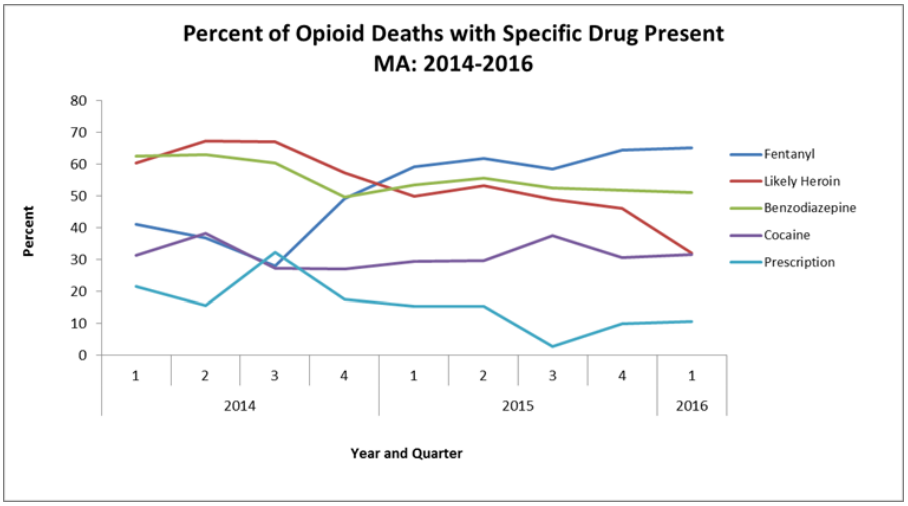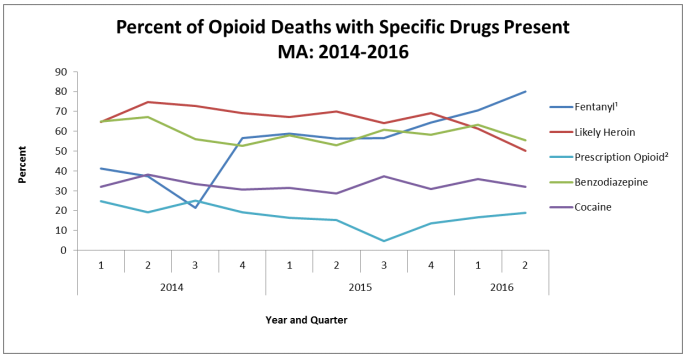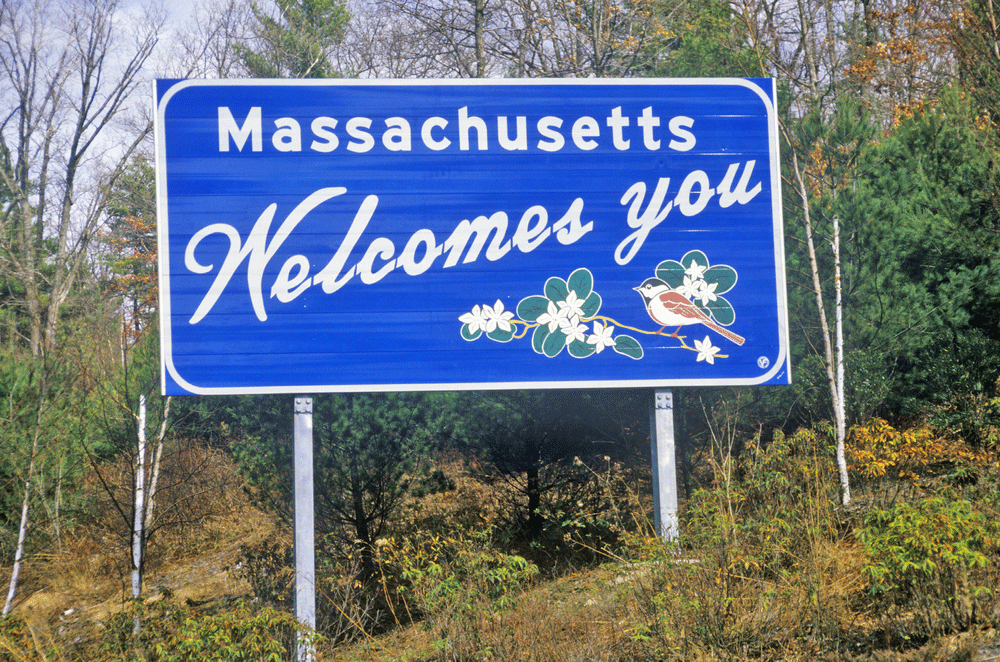New data shows that there’s no sign of improvement in the Massachusetts opioid epidemic.
The Massachusetts Department of Public Health (DPH) reported earlier this month that there were more opioid-related deadly overdoses in the first nine months of 2016 than during the same period last year.
An estimated 176 people died of opioid-related deaths in September of 2016, compared to an estimate of 165 people for the same month in 2015. Those numbers were highly exacerbated by the potent synthetic painkiller fentanyl.
Dr. Monica Bharel, commissioner of the state’s DPH, recently said that fentanyl is often mixed with heroin, which makes doses much more powerful and much more deadly. She added that although fentanyl has definitely contributed to the rise in the number of fatal overdoses in Massachusetts, heroin is equally to blame because it’s more widely used and is often cut with fentanyl without a user’s knowledge.
Diversion of pharmaceutical fentanyl in the United States happens but at a small level. Most of the fentanyl used in Massachusetts is illicitly produced rather than diverted pharmaceutical fentanyl, according to the Drug Enforcement Administration’s 2015 Investigative Reporting.
A data brief updated in August confirmed that “Among the 439 individuals (in Massachusetts) whose deaths were opioid-related in 2016 where a toxicology screen was also available, 289 of them (66 percent) had a positive screen result for fentanyl. In the first quarter of 2016, heroin or likely heroin was present in approximately 30 percent of opioid-related deaths that had a toxicology screen.”

The aforementioned report also states that “among the 693 individuals whose deaths were opioid-related in 2016 where a toxicology screen was also available, 510 of them (74 percent) had a positive screen result for fentanyl. In the second quarter of 2016, heroin or likely heroin was present in approximately 53 percent of opioid-related deaths that had a toxicology screen.”

The majority of unintentional, opioid-related overdose deaths in Massachusetts take place in Middlesex , Suffolk and Essex counties.
Essex County Police Chief Peter Silva said he thinks numerous overdose deaths happen there for a variety of reasons, such as… (continue reading)
















